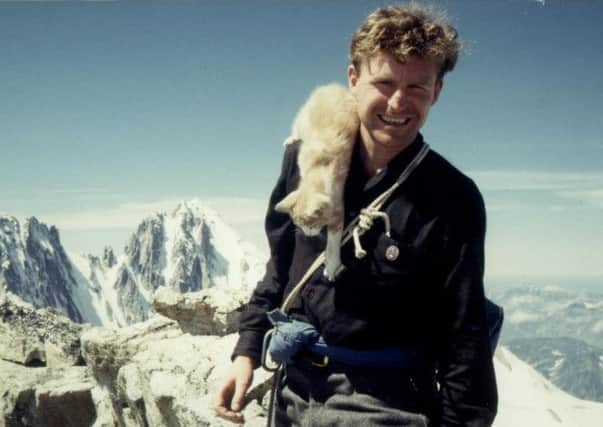Obituary: John Tyson, soldier, teacher and mountaineer


John Tyson OBE MC, soldier, teacher and mountaineer. Born: 7 April, 1928, in Glasgow. Died: 10 March, 2014, in Cumbria, aged 85.
Tyson concentrated on the especially forbidding 22,600 ft Mount Kanjiroba and other remote areas of Nepal.
Advertisement
Hide AdAdvertisement
Hide AdTyson was also a distinguished geographer and teacher, holding teaching posts at various schools in England and Nepal.
The Himalayas and the surrounding mountain ranges became central to Tyson’s life. He was determined to map, explore and document its flora and fauna. The mapping of the vast area was hugely challenging as the caverns, ridges and sheer height of the mountains made transportation difficult.
Tyson also had to contend with monsoons and avalanches.
Tyson’s first expedition dated from 1961 when he surveyed Mount Kanjiroba. Three years later he led an expedition to the surrounding area which proved exceptionally hazardous, due to swollen rivers and overhanging rocks.
Tyson was to return to the area and experience the perilous conditions with a stoic ease. His maps proved invaluable to later climbers. In 1970 he received a telegram from a Japanese team which, using his map, had succeeded in reaching the summit of Mt Kanjiroba. It read simply: “With your permission, we have climbed your mountain.”
John Baird Tyson was the son of a school master and the grandson of a former editor of The Glasgow Herald. He spent his youth in London where his father taught at St Paul’s School but the family returned to live in Edinburgh’s Colinton. Tyson attended Rugby School and then did National Service as a second lieutenant in the Argyll & Sutherland Highlanders, from 1947 to 1949.
He was seconded to the Seaforth Highlanders in Malaya during the Emergency. His platoon located a temporary bandit camp in an overgrown rubber plantation but despite heavy fire from three Bren guns Tyson’s men continued to occupy a strategic position and eventually ambushed a group of communist guerrillas. Tyson was awarded an MC – recognising his courage in pursuing the retreating guerrillas and leading his men in a particularly hazardous patrol in the Segamat district.
On being demobbed Tyson read Geography at Magdalen College, Oxford, and in 1952 led the first ever Oxford University Scientific Expedition to the Himalayas.
The following year he joined the distinguished Scottish mountaineer WH Murray on an exploratory journey to the remote Api and Nampa region in the far north-west of Nepal. Weather and political conditions proved time-consuming but the party advanced the knowledge of the region.
Advertisement
Hide AdAdvertisement
Hide AdIt was with WH Murray that Tyson campaigned in 1953 to protect the moorlands of Scotland from over-development. Murray had a major success in 1961 when plans to build a hydroelectric scheme in Glen Nevis were abandoned.
Tyson worked at the Outward Bound Mountain School in Eskdale and was then taught at Rugby School. In 1955 he joined Chris Brasher and Dr Roger Bannister to climb the Finsteraarhorn in the Alps. In 1965 Tyson was invited to become headmaster designate of a planned National School in Nepal funded from Britain. He found a suitable site at Budhanilkantha, just north of Kathmandu, but delays in the construction resulted in Tyson withdrawing from the project.
However, he was invited in 1975 to Nepal to become headmaster of Yangchenphug School. Despite three very successful years at the school the unrest in the region led the UK government to withdraw its funding and Tyson accepted the post of headmaster at Reed’s School in Cobham, Surrey.
In 1982 he was offered the headmastership at Budhanilkantha School back in Nepal where he spent six happy years. His diligent stewardship of the school brought it an international reputation and it became known as the Royal School of Nepal.
In 1987 he was appointed Prasiddha Prabal Gorkha Dakshin Bahu (the equivalent of a knighthood in Nepal) by King Birendra.
A former pupil has written: “John Tyson was a true friend of Nepal, his immense contributions to Budhanilkantha school and Nepal will live on forever.”
At the age of 70 Tyson and his son returned to the Kanjiroba Himal in 1998 and climbed to a height of 18,000 ft. He met his friends and sherpas and made three films for the BBC.
On a trip to Swaziland in 2009 he was bitten by a spider, which resulted in the amputation of both his legs. As a result his last years were spent in a wheelchair.
Tyson, who was awarded the OBE in 1989, is survived by his wife Phebe and their three children.